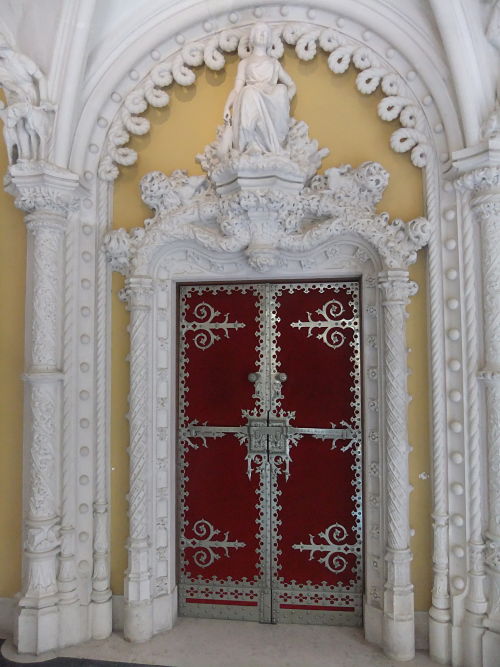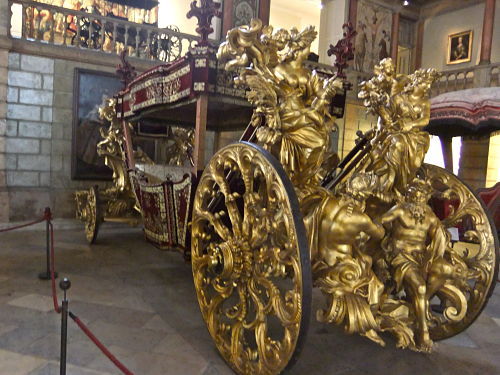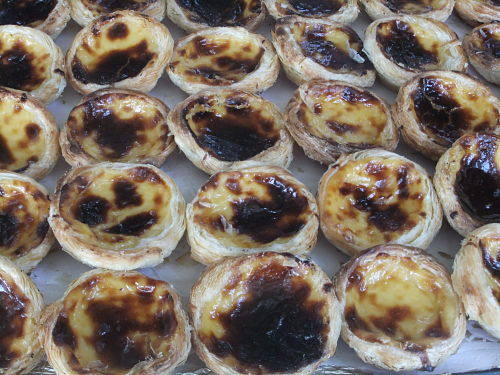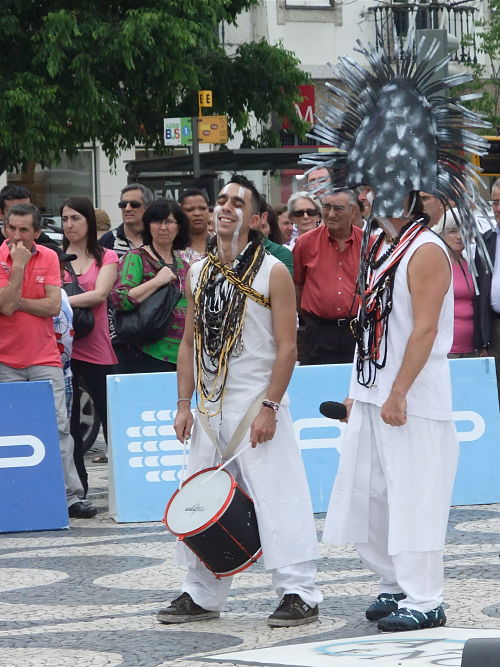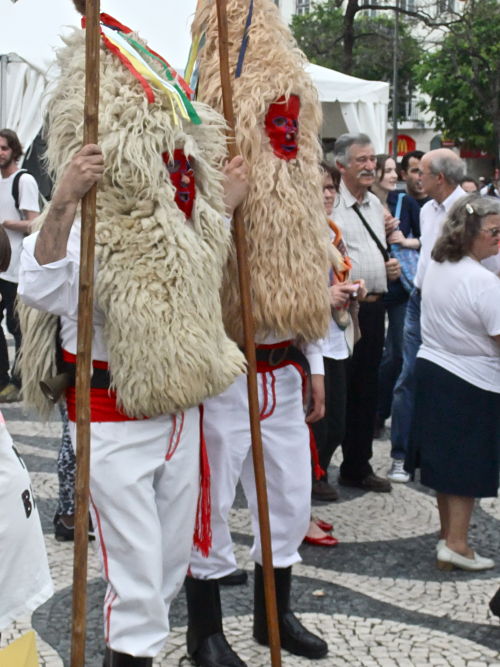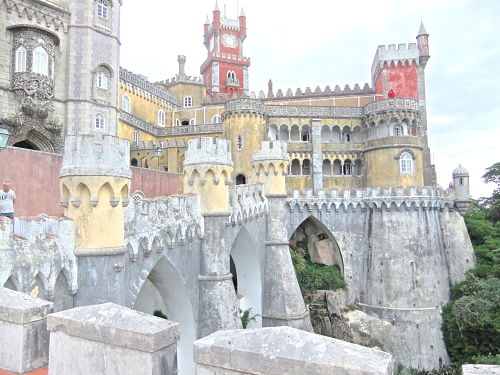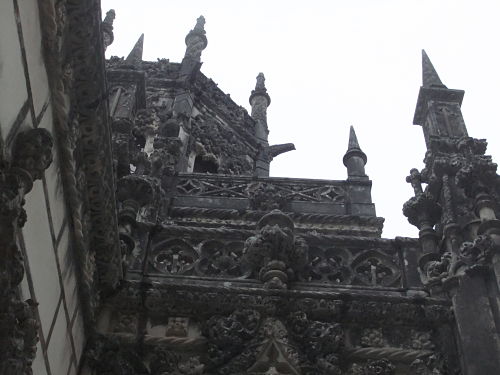How I Spent My Summer Vacation (Part Two): Portugal
/This is the second in a series of digital "scrapbooks" through which I capture and share my impressions of my extensive lecture tour across Europe. Last time, I dealt with Germany. Today, Portugal. Of all of the stops of my tour, Portugal was perhaps the biggest surprise. Given how little the average American (myself among them) knows about Portugal, it could not help but be a surprise. I had not expected to be so taken with the culture, the people, and the beauty of Lisbon and its surrounding area. Going into this leg of the trip, I could have told you four basic things about Portugal:
The first would have been what I had learned about Lisbon in the opening narration from Casablanca, which has long been a film favorite. http://www.youtube.com/watch?v=IU_raVGf87g
The movie's plot centers around the struggle to access papers which would allow refuges from Nazi Germany and Vichy France to get entry into Portugal. So, while the film is set in Morocco, it spends a surprising amount of time telling us about what Lisbon means in the context of the Second World War. When I learned I would be speaking in Lisbon, I had an impulse to see if I could retrace the character's route, and thus dip far enough south to visit Casablanca, but when I spent some time looking at my time table and the basic geography, this did not look like a good idea. I had to tell my wife that we would always have Paris, but we would not yet have Casablanca.
The second thing I knew about Portugal I learned in my high school history classes -- the role this country had played during the age of discovery as one of the key powers which have opened up the world to European exploration and trade. Specifically, I had been a big fan of Henry the Navigator, the Prince of Portugal most associated with this period of exploration and colonization, largely because of the name association, but also because I liked the cultural myth of the king who was also a geek.
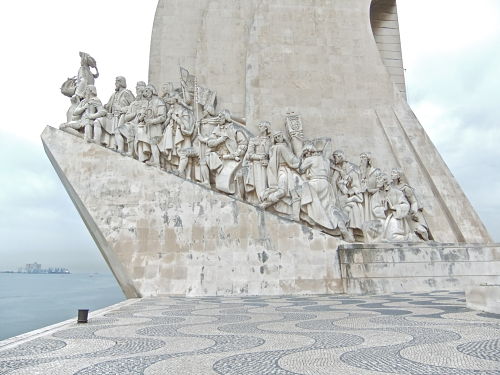 We were able to visit a monument in Lisbon to Henry and the age of exploration. Trust me, when cities start erecting monuments to Henrys, they get my attention. But this was a particularly stunning piece of sculpture -- which manages to evoke the plow of a ship pointing out towards the "new world" and at the same time, personify the rugged seamen who went on those first voyages. On the trip, though, I learned from a book called The First Frontier that Basque fishermen had been traveling to the coasts of Canada and the United States for centuries before their government officially "discovered" this part of the world, which complicates this story considerably. What I also learned was the huge impact that this period had on the architectural style of the city -- where the local architecture incorporated iconography associated with ships (such as ropes) into their design
We were able to visit a monument in Lisbon to Henry and the age of exploration. Trust me, when cities start erecting monuments to Henrys, they get my attention. But this was a particularly stunning piece of sculpture -- which manages to evoke the plow of a ship pointing out towards the "new world" and at the same time, personify the rugged seamen who went on those first voyages. On the trip, though, I learned from a book called The First Frontier that Basque fishermen had been traveling to the coasts of Canada and the United States for centuries before their government officially "discovered" this part of the world, which complicates this story considerably. What I also learned was the huge impact that this period had on the architectural style of the city -- where the local architecture incorporated iconography associated with ships (such as ropes) into their design
Or, natural images (both animals and plants associated with the New World.) Cynthia captured this architectural detail of a frog from one of their cathedrals
This image resonated with us because Cynthia had spent a lot of time at a park a few blocks from our hotel which had a pond which was overflowing with frogs. This is one of many great bits of nature photography she brought back from the trip.
We also got a sense of Portugal as a once powerful empire through our visit to a museum which housed the gilded carriages which had been used by the Royal family through the centuries.
If I had dug deeper into my historical memory, I might have recalled that this region's culture was also very strongly influenced by its history of interactions with the Moors, with the result that there is a strong Islamic flavor to much of the local architecture, especially in the use of brightly colored tiles with strong geometric patterns, such as the ones you see in this photograph.
The third thing I could have told you was that Portugal was closely associated with Brazil, sharing a common language with its former colony in South America. Almost every person in Lisbon I asked suggested that these links were more historical than contemporary, but my own observations suggested otherwise. A high percentage of the tourists I met in Lisbon came from Brazil. The grocery store I visited had a whole section devoted to Foods from Brazil. This would not be true of American grocery stores, for example, but then, we would almost be unlikely to have sections devoted to salted fish and meat, or for that matter, smoked pork products. We saw multiple posters for concerts of Brazilian music. And one of the first stops on our guided tour of the city was a monument to the first person to fly solo from Lisbon to Brazil. So, my sense was that there remain very strong cultural links between the two countries, even if these links were not always conscious or acknowledged.
Fourth, as a fan of world music, I knew about Fado. which historians believe emerged in Lisbon in the early 19th century. Wikipedia provides this useful definition:
In popular belief, fado is a form of music characterized by mournful tunes and lyrics, often about the sea or the life of the poor, and infused with a characteristic sentiment of resignation, fatefulness and melancholia (loosely captured by the word "saudade", or longing). However, although the origins are difficult to trace, today fado is by many regarded as a simply a form of song which can be about anything, but must follow a certain structure. The music is usually linked to the Portuguese word saudade which symbolizes the feeling of loss (a permanent, irreparable loss and its consequent life lasting damage).
You can get a sense of what Fado sounds like (and almost as importantly, looks like) from these two clips which I found on Youtube.
As the clips suggest, the style of music is associated with certain gestures and postures, with a style of performance, with a structure of feeling (suadade), with a set of traditional themes (including, once again, the sea) and with a specific set of musical structures, all of which are distinct to this region. As the clips may also illustrate, each of these is heavily gendered so there are very different modes for men and women in performing these songs. Cynthia and I were lucky enough to have been taken to Clube De Fado, one of the nightclubs in Lisbon which, as the name suggests, is strongly associated with Fado. We were able to see for ourselves the intensity of this musical tradition and the command it still exerts on the heart and soul of the city.
As much as I enjoyed the music and the company on this particular evening, I also will savor for a long time to come the food, which was one of the best meals I had on my entire trip. I ordered something which roughly translates "the treasures of the Black Pork." This was my introduction to the pleasures of eating Pork-based products in Europe. I was nervous from the name that the "treasures" might be various entrails, which might not match my Americanized aesthetic. In fact, they were simply really savory cuts of fried pork. Consistently in Europe, we were struck by how meat-centric the cuisines were and especially how much more central pork, particularly hams of many varieties, are to their everyday diets. This image which Cynthia captured at a street fair shows the pride they take in their meats.

For dessert, I had, for the first but scarcely the only time on the trip, the pasteis de nata, small custard pies, which quickly became a personal favorite, and which I sampled at several different bakeries as we were walking around Lisbon.
One day, as we were wandering through the Center City of Lisbon, we stumbled onto a street festival which was clearly celebrating the diverse folk traditions of various regions around the country. As a result, we encountered one visually striking set of folk costume after another. Here are just a few examples.
I wish I could place more cultural context around these costumes (and the dances or public performances associated with them), since they really captured my imagination, but we were not working with a guide at that point and any explanation provided would have come in a language I do not understand. If there's any reader out there who can provide us with a fuller explanation, I would really appreciate you sharing it with me and my readers.
Another highlight of our time in Portugal was a day trip we took to Sintra, located in the mountains outside Lisbon. Apart from the natural beauties of this region, it represented such a striking playground of the imagination.
For example, we visited the Palacio da Pena, built for Portugal's royal family in the 19th century with an eclectic mix of styles, including Neo-Gothic, Neo-Manueline, Neo-Islamic, Neo-Renaissance, and the key word in each case is Neo. The architects took what they found most exotic and eye-catching from a range of styles to construct a castle that might otherwise have existed only in our feverish imaginations. Everything is brightly colored, epic in proportion, and full of fantastical details, which left one feeling like you were visiting Edgar Rice Burrough's Mars or some equally fanciful location from the space opera of your choice.
By contrast, we also visited the nearby the Quinta da Regaleria, a gothic mansion created for Antonio Augusto Carvalho Monteiro (1848-1920) in conjunction with the talent of the scenographer-architect Luigi Manini (1848-1936). Monteiro was among other things rumored to be an alchemist and a Freemason. There is a haunting, morbid atmosphere about the place, which reminds me very much of the Haunted Mansion at Disneyland or the setting of one of the great Roger Corman films with Vincent Price.
Some of the floors were designed to produce vertigo. The library, for example, was lined with mirrors on the floor, so it looked like it was floating in space and as there were book shelves running below as well as above. As someone who suffers from mild forms of fear of heights, I actually found myself panicking when I had to walk across the floor. But, there's also something playful about the ways the house uses pseudo-Medieval elements throughout, such as the stone boar and other wild game hanging on the wall in this shot.
All told, the place is consistently unsettling and "spooky, complete with garden mazes and underground grottos -- what's not to love!
Of course, so far, I've made it sound as if Lisbon was all sight-seeing. I gave three talks in Lisbon. First, I did a presentation on Spreadable Media as one of the two keynotes (along with Andras Balint Kovacs from Budapest) at the conference of the Associacao Investigadores Da Imagen em Movimento (The Association for Investigators of the Moving Image), which is the key professional organization for film and media scholars in Portugal. The day before, my host, Tiago Baptiste, a film historian and archivist who has done work on silent and early sound films in Portugal, took us to see the Cinemateca Portuguesa, the national film archive, which is housed in a beautiful old mansion, and which currently had a great display of the origins of home movie projectors.
The event was being held the same day as filmmakers and stars were marching in protest in Lisbon over the ways that state support for the national cinema was being gutted as part of the austerity moves Portugal was being forced to make in response to the European economic crisis. While my talk ended with some hope for the ways that crowd-funding and surfing models were offering new resources for independent media makers to work outside traditional gatekeepers, I was forced to acknowledge that the filmmakers most at risk today may be those who had thrived under the state-funding models which produced films as national prestige projects for exhibition in international film festivals. Such films are perhaps too idiosyncratic in their vision to be adequately previewed on Kickstarter or to have the solid base of fan support that has surrounded projects like The Cosmonaut or Iron Skies. As we argue in the book, these crowd funding models do hold open opportunities for producers who have courted solid and committed followers -- not simply fans but also racial, ethnic, or sexual minorities or political movements who have reason to want to see certain kinds of films made which are unlikely to emerge from the Hollywood system. However, they may not support the most personalized forms of expression that drove the various New Wave film movements around the world in the 1960s.
Following the talk, I had a lively interview with an independent filmmaker, Edgar Pera, who sought my comments about the similarities and differences between cinephilia and fandom for his latest production. As you can see from this trailer for The Baron, his films draw strong inspiration from horror films and other B-movies, and so we had a very enjoyable conversation about monster movies fans
.
My second talk in Lisbon, dealing with the Harry Potter Alliance as a model for fan activism (and based on my essay in Transformative Works and Cultures), was presented to faculty and students at t ISCTE - Lisbon University Institute. My host, Gustavo Cardoso, is a sometimes collaborator with my USC colleague Manuel Castells. As Cardoso was walking us across the campus, we heard cries of surprise and someone raced up to me, urgently asking if I was, indeed, Henry Jenkins. It turned out that this was Kris Hammer, a reader of this blog currently studying in Estonia, who was visiting the campus for totally unrelated reasons. He was surprised to discover that I was about to deliver a lecture. He tagged along with us and engaged actively in the question and answer period.
My third talk was a half day "master class" on news and politics in the digital age, supported by the U.S. Embassy, and given to Cenjor, a school which trains future journalists. I was able to share with the group some of the research being done by Civic Paths and the Youth and Participatory Politics Network, not to mention the thinking which is shaping the Journalism program at USC's Annenberg School. The reporters jumped into the talk quickly and basically, drained me dry, sucking up any insights I could give them about the interplay between professional and citizen journalists, new business models for the future of news, digital and news literacy, and the ways that Spreadable Media might speak to how news circulates through the culture. Something of the tone of these exchanges is captured in this short news report produced by some of the school's students around my visit.
Meanwhile back at the ranch: My son sent us frame grabs from this Carl Jr's commercial which was then playing in the Los Angeles market. The commercial features Spider-Man interacting with people waiting outside the Orphan Theater (which is across the street from where I live) before swinging past the Eastern Columbia (which is my building.) So, after years of fantasizing that he really was my "friendly neighborhood Spider-man," the guy drops by my street, no doubt looking to hook up for some late night adventure, and I am half way across the world! Life is not fair! So, Spidey, if you are reading this, please drop back by the Eastern building. I'd really love to hang out with you.
Of course, it makes total sense that this version of Spider-Man would have a thing for Downtown Los Angeles, since the new film was directed by Mark Webb, who directed (100)Days of Summer, a film which captures the culture of Downtown Los Angeles about as well as anything I've seen.
Coming Soon: My adventures in England and Ireland.


